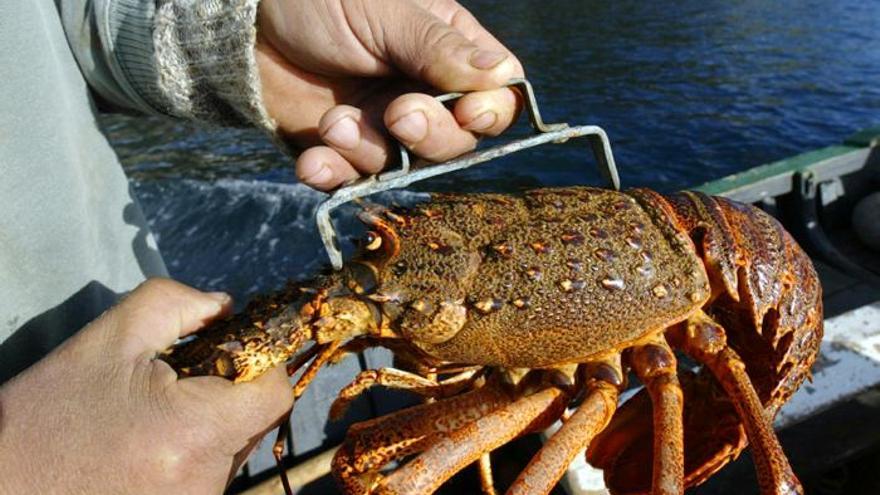
![]() 14ymedio, Havana, 29 August 2022 — The production of lobster destined for export is one of the few things that seems to be going strong in Cuba. In Niquero, a municipality of Granma Province, the plan for July of 44 tons was exceeded in just nine days, reaching 52 tons of the crustacean.
14ymedio, Havana, 29 August 2022 — The production of lobster destined for export is one of the few things that seems to be going strong in Cuba. In Niquero, a municipality of Granma Province, the plan for July of 44 tons was exceeded in just nine days, reaching 52 tons of the crustacean.
According to Jorge Rosa Acuña, plant manager of the company InduNiq, most of the success can be attributed to the implementation of new technology: a tunnel freezer and a plate freezer that have accelerated the capacity to store the lobster.
“Previously, it took us 24 hours to freeze a production; today we need only eight. The plate freezer allows us to carry out other productions on a par,” the official explains to the local newspaper La Demajagua.
In a context of constant blackouts and energy limitations for companies, the Government seems determined to maintain a meteoric march of the lobster industry, which in 2020 — the last year for which data are available — returned an income of 40.5 million dollars. The island was then the fifth largest exporter of the product worldwide, only behind Brazil, Nicaragua, the Bahamas and Honduras.
One of the company’s workers explained to the provincial newspaper that the processing of lobster is very delicate due to the demands on foreign sales. In Cuba, the product has practically disappeared from all markets.
“There are several indispensable requirements to meet the customer’s demands. Lobster is an export product that goes to the world market: Asia, Africa and Europe. So it includes review processes and quality control,” he said.
It is the second Cuban company in just three months to report its success in this area, one of the main ones along with rum, tobacco, nickel and shrimp. Last May, the La Coloma fishery in Pinar del Río presented in the official press its lobster hatchery project for export.
“It’s a project that, more than increasing the amount of product to be exported, raises the economic value of the company and is one more selection for customers that we will offer,” said Ray Leonar Sánchez Ramírez, director of the company.
The investment in the ponds, which keep the crustacean for up to 72 hours before it is moved abroad, is two million pesos, but it would allow the production of two tons of lobster per day.
The lobster catch season runs from the beginning of June to the end of January. After the end of the season, a closure period of at least four months is established to facilitate the recovery of the species before the start of the new season.
Cubans hadn’t seen lobster for ages, until after the protests of July 11, 2021 (known as ’11J’), the Government sent to the markets some products that hadn’t been seen for a long time, in order to appease the spirits of the population. Among them were the ground beef and the reputed crustacean, which cost 200 pesos without being of excellent quality.
In the most well-known gastronomic places in Havana, a Cuban lobster dish can easily exceed 700 pesos. This is the case of the state-owned Bodeguita del Medio, where 280 grams of lobster costs 705 Cuban pesos, as well as of the private bar-café Mercy, which serves it for 990.
On the black market, prices can be more affordable. In the case of fishing towns such as Batabanó or Caibarién, they can even be less than 100 pesos, but on average, lobster can be obtained for 400 pesos a pound on the “informal” market.
Translated by Regina Anavy
____________
COLLABORATE WITH OUR WORK: The 14ymedio team is committed to practicing serious journalism that reflects Cuba’s reality in all its depth. Thank you for joining us on this long journey. We invite you to continue supporting us by becoming a member of 14ymedio now. Together we can continue transforming journalism in Cuba.
